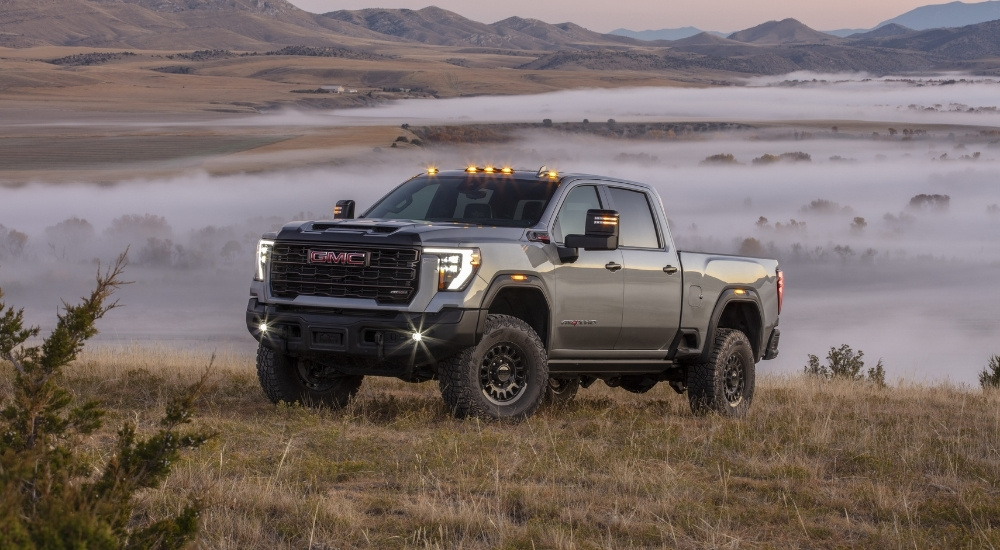When it comes to GMC vehicles, suspension reliability varies dramatically across different models and generations. While GMC has built a reputation for producing “Professional Grade” trucks and SUVs, the reality is that some models consistently deliver exceptional suspension longevity, while others seem plagued by chronic suspension failures that can cost owners thousands in repairs.
Understanding which GMC models to trust with your hard-earned money requires looking beyond marketing materials and examining real-world reliability data, owner experiences, and technical specifications.
The suspension system is one of the most critical components of any vehicle, directly affecting ride quality, handling, safety, and overall driving experience.
A reliable suspension system should provide years of trouble-free service, while a problematic one can lead to frequent repairs, safety concerns, and a significant financial burden.
This comprehensive analysis examines ten GMC models, split between five that demonstrate exceptional suspension reliability and five that are notorious for suspension problems.
We’ll explore the engineering decisions, design flaws, and manufacturing quality that separate the winners from the losers. From the robust Sierra 2500HD that can handle decades of heavy-duty work to the problematic Yukon with its complex air suspension systems, each model tells a story of engineering success or failure.
Whether you’re shopping for a used GMC or trying to decide if your current model is worth keeping, this guide will provide the detailed information you need to make informed decisions about suspension reliability and potential repair costs.
5 GMCs That Rarely Need Suspension Work
These robustly engineered vehicles feature heavy-duty suspension components, quality shock absorbers, and durable chassis construction that deliver decades of reliable ride quality and handling performance without premature wear or component failures under normal driving conditions.
Their proven suspension designs incorporate reinforced control arms, quality ball joints, and effective bushing systems that resist deterioration while maintaining proper alignment and smooth operation across various road surfaces and load conditions.
The combination of commercial-grade components, conservative engineering margins, and extensive real-world testing creates ownership experiences that eliminate suspension repair anxiety during extended vehicle life cycles.
From reliable pickup trucks with proven suspension geometry to SUVs with heavy-duty components, these vehicles demonstrate GMC’s truck-building expertise through patient development and thorough validation that prioritizes durability over cost reduction, delivering dependable suspension performance that maintains ride quality and handling characteristics throughout hundreds of thousands of miles of operation.
1. GMC Sierra 2500HD (2011-2019)
The GMC Sierra 2500HD from the 2011-2019 generation stands as a testament to robust suspension engineering, particularly when equipped with the standard leaf spring rear suspension and conventional front suspension setup.
This heavy-duty truck was designed from the ground up to handle extreme loads, harsh conditions, and years of commercial use, which translates directly into exceptional suspension longevity for regular consumers.
The front suspension utilizes a proven torsion bar design with robust control arms, heavy-duty ball joints, and commercial-grade shock absorbers.
This system is engineered with significant over-capacity, meaning the components are designed to handle far more stress than typical driving conditions impose.
The torsion bars themselves are virtually indestructible under normal use, and the associated components benefit from this conservative engineering approach. Ball joints in this generation are particularly robust, often lasting well beyond 200,000 miles without requiring replacement.
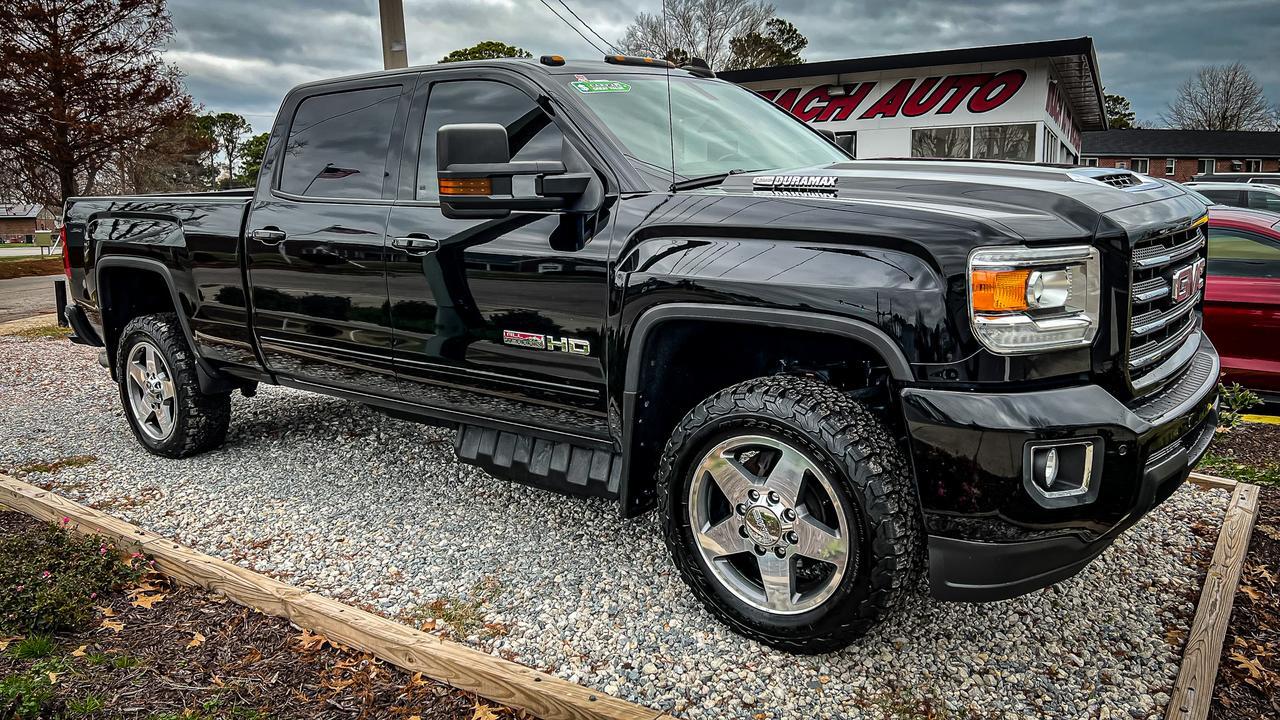
The rear suspension employs traditional leaf springs, a time-tested design that has proven its durability across decades of heavy-duty applications.
These leaf springs are manufactured with high-grade steel and designed with substantial safety margins. The rear shocks are heavy-duty units that typically last 100,000-150,000 miles before showing signs of wear, significantly longer than many light-duty alternatives.
What sets this Sierra apart from problematic models is its simplicity and over-engineering. There are no complex air suspension systems, electronic ride control systems, or lightweight components that prioritize comfort over durability.
The lack of complex systems means fewer failure points and lower overall maintenance costs. Even when components do eventually wear out, parts are widely available and relatively affordable compared to more complex suspension systems found in other GMC models.
2. GMC Canyon (2004-2012)
The first-generation GMC Canyon represents one of the most suspension-reliable mid-size trucks ever produced by General Motors. Built on the GMT355 platform, this truck featured a well-engineered suspension system that prioritized durability and simplicity over advanced features, resulting in exceptional longevity and minimal maintenance requirements.
The front suspension employs a traditional short-long arm (SLA) independent design with torsion bars for spring control. This system is inherently robust, with the torsion bars providing excellent load-carrying capacity while maintaining ride comfort.
The control arms are constructed from heavy-gauge steel with robust bushings that typically last the life of the vehicle. Ball joints are sized generously and manufactured to commercial standards, often exceeding 150,000 miles before requiring attention. The rear suspension utilizes a solid axle with leaf springs, a configuration that has proven its worth across millions of trucks worldwide.
The leaf springs are multi-leaf designs manufactured from high-quality spring steel, providing excellent load capacity and durability. The rear shocks are conventional monotube or twin-tube designs that offer reliable performance and easy replacement when needed.
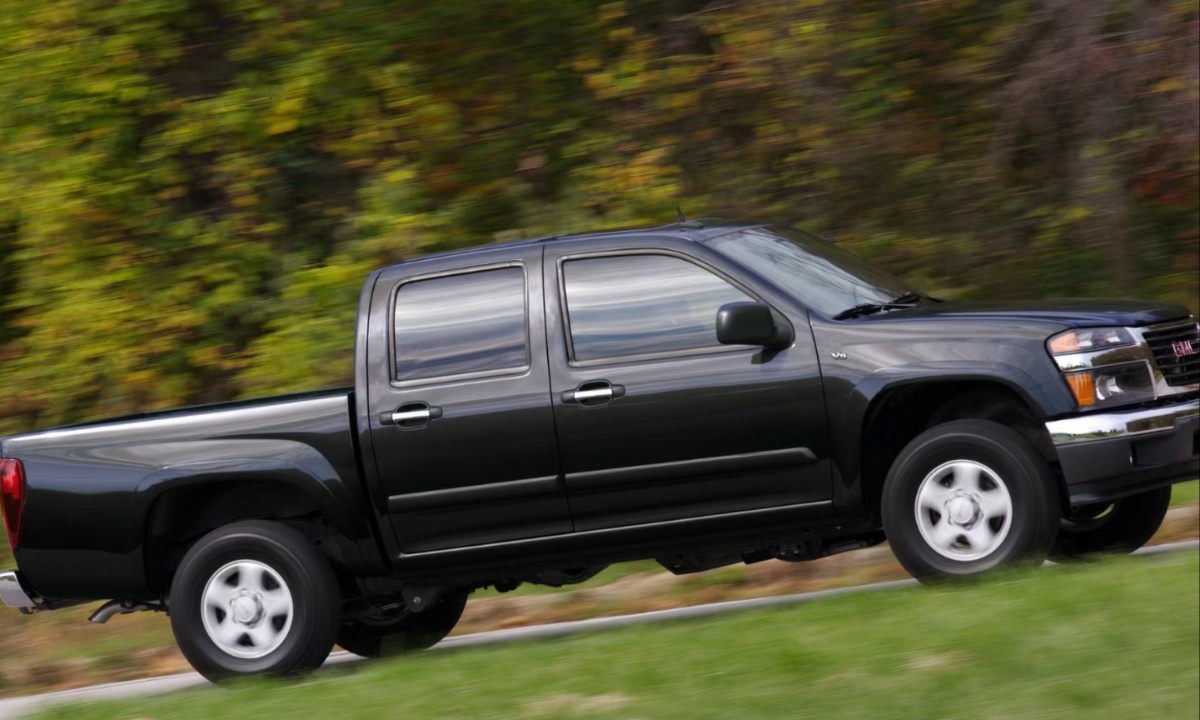
What makes this Canyon generation particularly reliable is its conservative engineering approach. General Motors designed this truck during an era when durability was prioritized over weight savings or advanced features.
The suspension components are generously sized and manufactured with high-quality materials. There are no complex electronic systems to fail, no air springs to leak, and no adaptive damping systems to malfunction.
Owner reports consistently highlight the Canyon’s exceptional suspension reliability. Many owners report original suspension components functioning properly well beyond 200,000 miles.
There are no widespread recalls or service bulletins related to suspension failures, no common failure modes that plague owners, and no expensive surprise repairs that characterize more complex systems. This reliability has made the first-generation Canyon a favorite among used truck buyers who prioritize dependability over modern features.
3. GMC Acadia (2017-2020)
The second-generation GMC Acadia, introduced in 2017, represents a significant improvement in suspension reliability compared to its predecessor and stands out as one of the most dependable three-row crossovers in terms of suspension durability.
Built on GM’s C1XX platform, this Acadia benefits from lessons learned from earlier models and incorporates proven suspension technologies that prioritize longevity.
The front suspension features a MacPherson strut design with a robust subframe and well-engineered mounting points. The struts themselves are high-quality units that typically provide 80,000-100,000 miles of service before showing signs of wear.
The strut towers are reinforced and designed to prevent the stress cracking that plagued some earlier GM crossovers. Lower control arms are constructed from high-strength steel with quality bushings that resist premature wear.
The rear suspension employs a four-link independent design with coil springs and separate shock absorbers. This system provides excellent ride quality while maintaining durability.
The rear shocks are well-protected from road debris and environmental factors, contributing to their longevity. The coil springs are manufactured from high-grade spring steel and are conservatively rated for the vehicle’s weight and intended use.

A key factor in the Acadia’s suspension reliability is its weight reduction compared to the previous generation. The second-generation model is approximately 700 pounds lighter while maintaining structural rigidity, which reduces stress on suspension components.
This weight reduction, combined with improved component design, results in significantly longer component life and fewer failures. GM also addressed several common failure points from the first-generation Acadia in this redesign.
The absence of major suspension problems, recalls, or widespread component failures makes this Acadia a standout choice for families seeking reliable three-row transportation without suspension-related headaches.
4. GMC Savana (2003-Present)
The GMC Savana full-size van has maintained essentially the same robust suspension design since 2003, and this consistency has resulted in one of the most reliable suspension systems in the GMC lineup.
Designed primarily for commercial and fleet use, every aspect of the Savana’s suspension is engineered for maximum durability and minimum maintenance, making it an exceptional choice for reliability.
The front suspension utilizes a twin I-beam design that has proven its worth across millions of commercial vehicles. This system features massive steel I-beams that serve as both springs and locating devices for the front wheels.
The design is incredibly robust and virtually immune to the types of failures that plague more complex independent suspension systems. The twin I-beam setup can handle severe abuse, heavy loads, and years of commercial use while maintaining proper alignment and functionality.
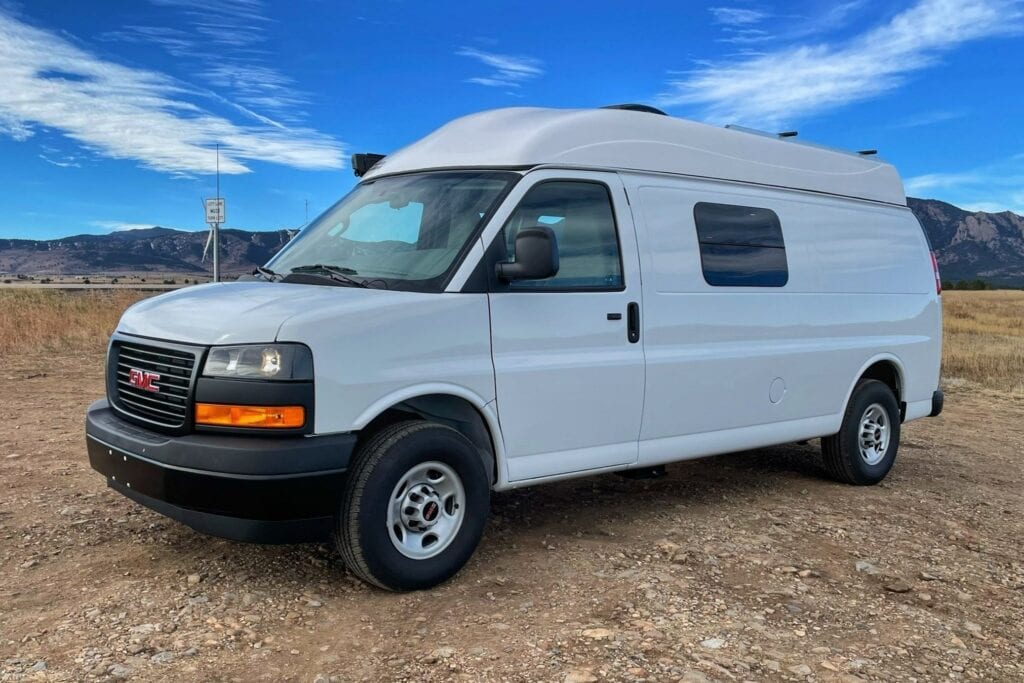
Coil springs in the front provide the primary springing medium, and these are heavy-duty units designed for commercial applications. They typically last the life of the vehicle and rarely require replacement unless damaged by external forces. The front shocks are heavy-duty monotube units that provide 100,000+ miles of reliable service even under severe conditions.
The rear suspension employs leaf springs with a solid axle, the gold standard for durability in commercial vehicles. These leaf springs are manufactured from high-grade spring steel and are designed with substantial reserve capacity.
They can handle maximum payload repeatedly without failure and typically last well beyond 200,000 miles. The rear shocks are similarly robust, designed for heavy-duty applications and extended service intervals.
The simplicity of the system means repairs, when needed, are straightforward and inexpensive. Parts availability is excellent due to the long production run and high volume of these vans in commercial service.
Also Read: 5 Hidden Gem Convertibles vs 5 Popular Convertibles With Leaky Tops
5. GMC Sierra 1500 (2014-2018)
The GMT K2XX generation GMC Sierra 1500 from 2014-2018 represents a sweet spot in suspension engineering, balancing modern refinement with proven durability.
This generation Sierra incorporates lessons learned from previous models while avoiding the complexity that can compromise long-term reliability, resulting in one of the most dependable light-duty truck suspensions in GMC’s history.
The front suspension features an independent short-long arm design with coil springs and separate shock absorbers. This system provides excellent ride quality and handling while maintaining durability.
The upper and lower control arms are constructed from high-strength steel with quality bushings that resist premature wear. Ball joints are properly sized for the application and typically provide 100,000+ miles of service. The coil springs are manufactured from high-grade steel and are conservatively rated for the truck’s intended use.
The rear suspension employs traditional leaf springs with a solid axle, a time-tested configuration that has proven its reliability across millions of vehicles.
These leaf springs are multi-leaf designs that provide excellent load-carrying capacity while maintaining ride comfort. The rear shocks are quality units that typically last 80,000-100,000 miles before requiring replacement.
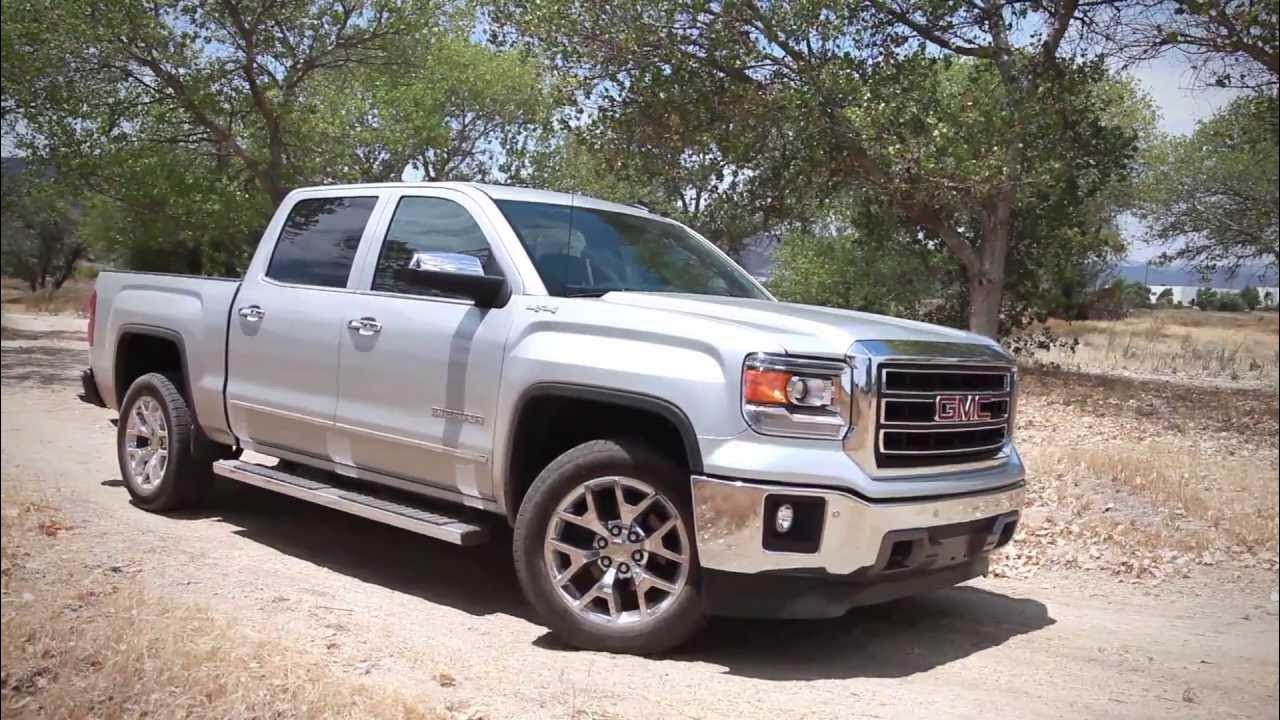
A key factor in this Sierra’s reliability is GM’s decision to avoid overly complex systems while incorporating necessary modern features. The truck includes electronic stability control and other safety systems, but the suspension itself remains mechanically straightforward.
There are no air springs, no adaptive damping systems, and no electronic ride height controls to fail and require expensive repairs. The manufacturing quality of this generation is notably high, with improved materials and better assembly processes compared to some earlier models.
Major suspension failures are rare, and when components do eventually wear out, parts are readily available and reasonably priced. The combination of proven design, quality manufacturing, and conservative engineering makes this generation Sierra an excellent choice for buyers seeking reliable light-duty truck performance.
5 GMCs That Constantly Fail
These problematic vehicles burden owners with recurring suspension failures, premature component wear, and expensive repair cycles that contradict GMC’s truck reputation through inadequate engineering and substandard components that deteriorate rapidly under normal driving conditions.
Their compromised suspension systems incorporate weak ball joints, problematic shock absorbers, and insufficient bushing quality that generate endless repair headaches despite GMC’s positioning that suggests superior durability and capability over mainstream competitors.
The combination of cost-cutting measures, inadequate testing, and problematic component selection creates ownership disasters as buyers discover that GMC’s truck heritage cannot prevent fundamental suspension design failures that prioritize manufacturing costs over basic reliability.
From models with known ball joint issues to vehicles with premature shock failure patterns, these trucks prove that GMC’s engineering consistency varies dramatically across model lines, transforming work vehicles into expensive repair burdens requiring constant suspension replacement that quickly exceeds typical maintenance budgets and undermines confidence in GMC’s traditional quality standards.
1. GMC Yukon (2007-2014)
The second-generation GMC Yukon, particularly models equipped with the Autoride air suspension system, represents one of the most problematic suspension designs in GMC’s history.
Some GMC Yukon owners may notice that their air leveling suspension system no longer functions or exhibits a low / leaning suspension condition, and this has become a chronic issue that affects thousands of owners with expensive and recurring repair bills.
The Autoride system utilizes air springs at all four corners, controlled by a complex network of sensors, electronic control modules, and air compressors.
Air spring failures typically manifest as sagging corners, uneven ride height, or complete system shutdown. Replacement costs for a single air spring range from $300-500 for the part alone, not including labor charges that can add another $200-400 per corner. Many owners find themselves replacing multiple air springs within short time periods, leading to repair bills exceeding $2,000-3,000.
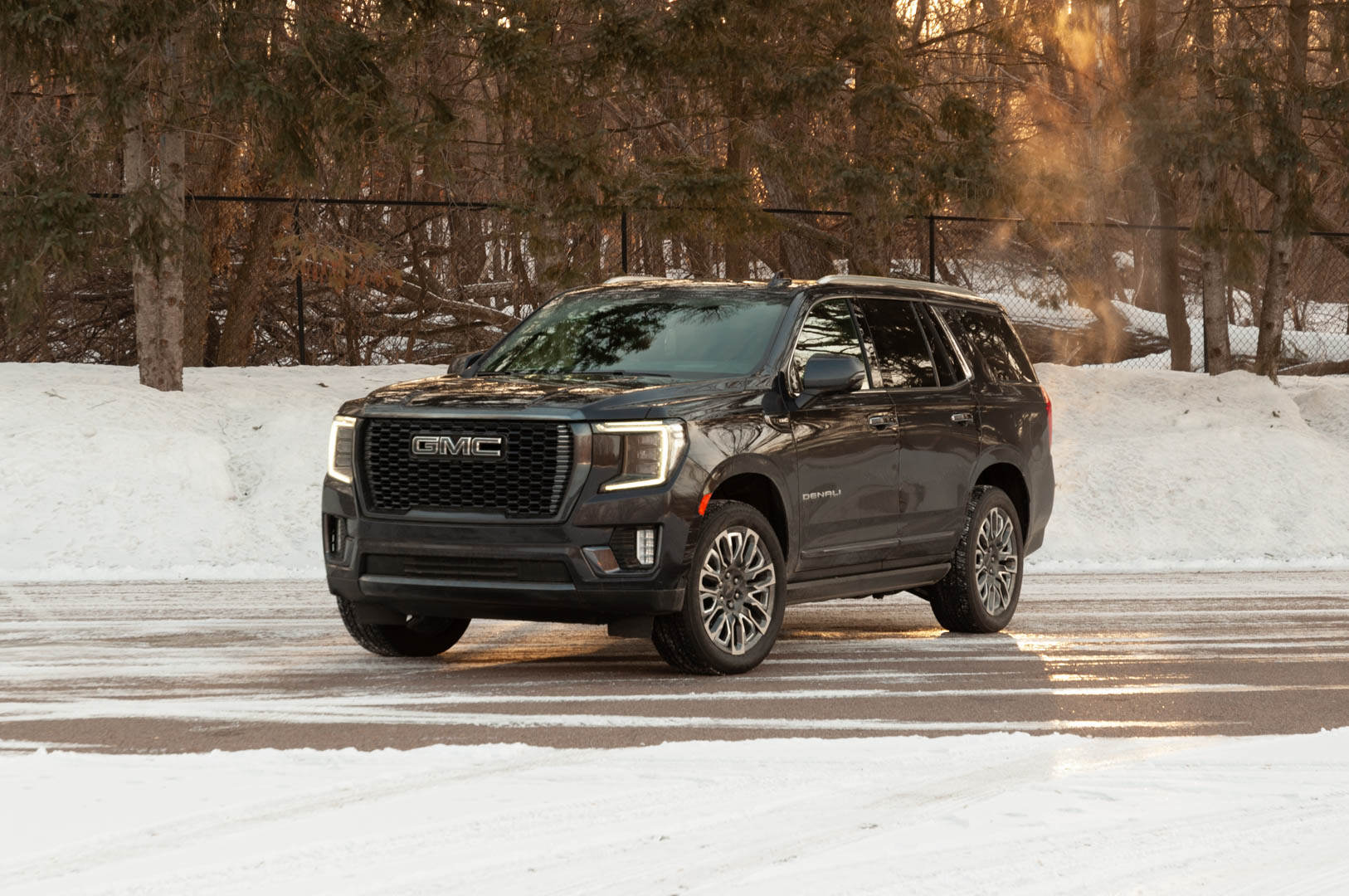
The air compressor is another common failure point, particularly in northern climates where moisture can freeze and damage internal components.
When the compressor fails, the entire system becomes inoperative, leaving the vehicle sitting on its bump stops with severely compromised ride quality and safety. Compressor replacement typically costs $800-1,200, including labor.
Electronic components add another layer of complexity and potential failure. Height sensors can become contaminated or damaged, causing erratic system behavior.
The electronic control module can fail due to moisture infiltration or electrical issues. Even wiring harnesses can develop problems due to their routing through areas exposed to road salt and debris.
Many owners resort to aftermarket conversion kits that replace the air suspension with conventional coil springs, which can cost $1,500-2,500 but eliminate the ongoing reliability issues. This widespread conversion trend demonstrates the fundamental problems with GM’s air suspension design.
2. GMC Terrain (2010-2017)
The first-generation GMC Terrain suffers from one of the most severe suspension design flaws in modern automotive history: strut tower failure. This problem affects virtually every Terrain from this generation and represents a fundamental engineering mistake that compromises both safety and reliability.
The issue stems from inadequate structural reinforcement around the front strut towers, leading to catastrophic failures that can render the vehicle unsafe to drive. The strut tower problem typically manifests as cracking in the sheet metal around the strut mounting points.
As these cracks develop and spread, the strut tower can separate from the vehicle’s structure, causing immediate loss of suspension function and creating an extremely dangerous situation.
The cracking often begins around 60,000-80,000 miles but can occur earlier or later depending on driving conditions and maintenance history. Initial symptoms include unusual noises from the front suspension, particularly knocking or rattling sounds over bumps.
As the condition worsens, owners may notice changes in steering feel, uneven tire wear, or visible sagging of one front corner. By the time these symptoms are apparent, significant structural damage has already occurred, and repairs become extremely expensive.
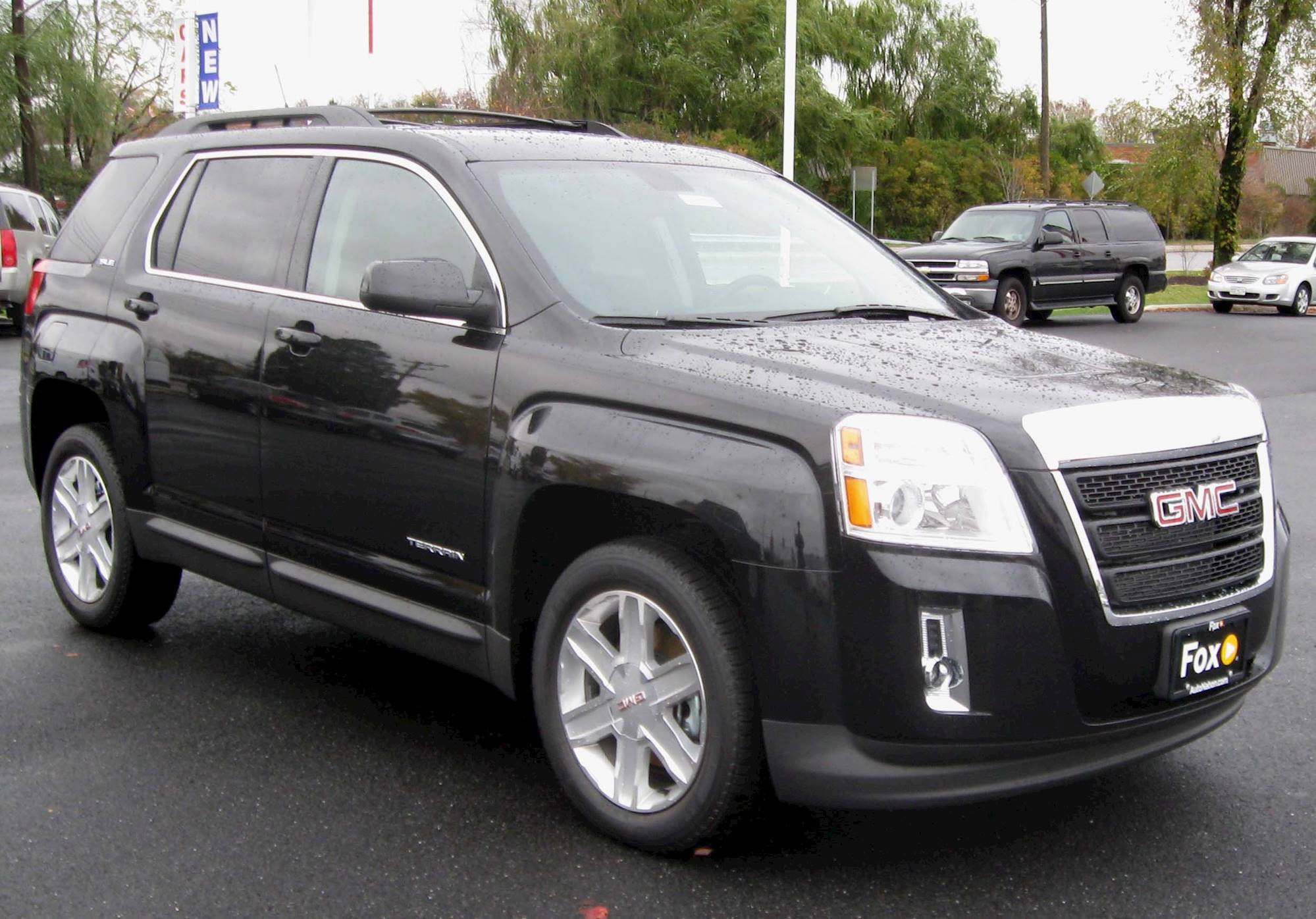
Repairing strut tower failure requires extensive bodywork and structural reinforcement that can cost $3,000-5,000 per side. The repair involves cutting out the damaged area and welding in reinforcement plates or completely new strut tower assemblies.
Many repair shops are reluctant to perform this work due to liability concerns, and some insurance companies have declared vehicles with this problem as total losses.
The root cause of this problem lies in cost-cutting measures during the Terrain’s development. The strut towers were manufactured from thin gauge steel without adequate reinforcement around high-stress areas. The mounting points for the struts create stress concentrations that exceed the material’s fatigue limits, leading to crack initiation and propagation.
GM eventually acknowledged this problem through a Technical Service Bulletin but never issued a recall despite the obvious safety implications. The company’s recommended repair involves reinforcement plates that cost approximately $500 in parts plus substantial labor charges.
This combination of safety concerns, high repair costs, and poor reliability makes the first-generation Terrain one of the worst suspension designs in GMC’s history.
3. GMC Canyon (2015-2020)
The second-generation GMC Canyon represents a significant step backward in suspension reliability compared to its predecessor. Built on GM’s GMT31XX platform, this Canyon suffers from numerous suspension-related problems that have plagued owners since its introduction.
The issues stem from cost-cutting measures, design compromises, and quality control problems that affect virtually every aspect of the suspension system.
Front suspension problems center around premature ball joint failures, often occurring well before 60,000 miles. The ball joints are under-engineered for the application and show signs of wear much earlier than expected.
Replacement costs range from $400-600 per side, and many owners find themselves replacing ball joints multiple times during the vehicle’s warranty period and beyond. Control arm bushings represent another common failure point, with many owners reporting replacement needs before 50,000 miles.
The bushings are made from inferior rubber compounds that deteriorate rapidly under normal use. When these bushings fail, they cause alignment problems, uneven tire wear, and poor handling characteristics. Replacement typically costs $300-500 per arm.
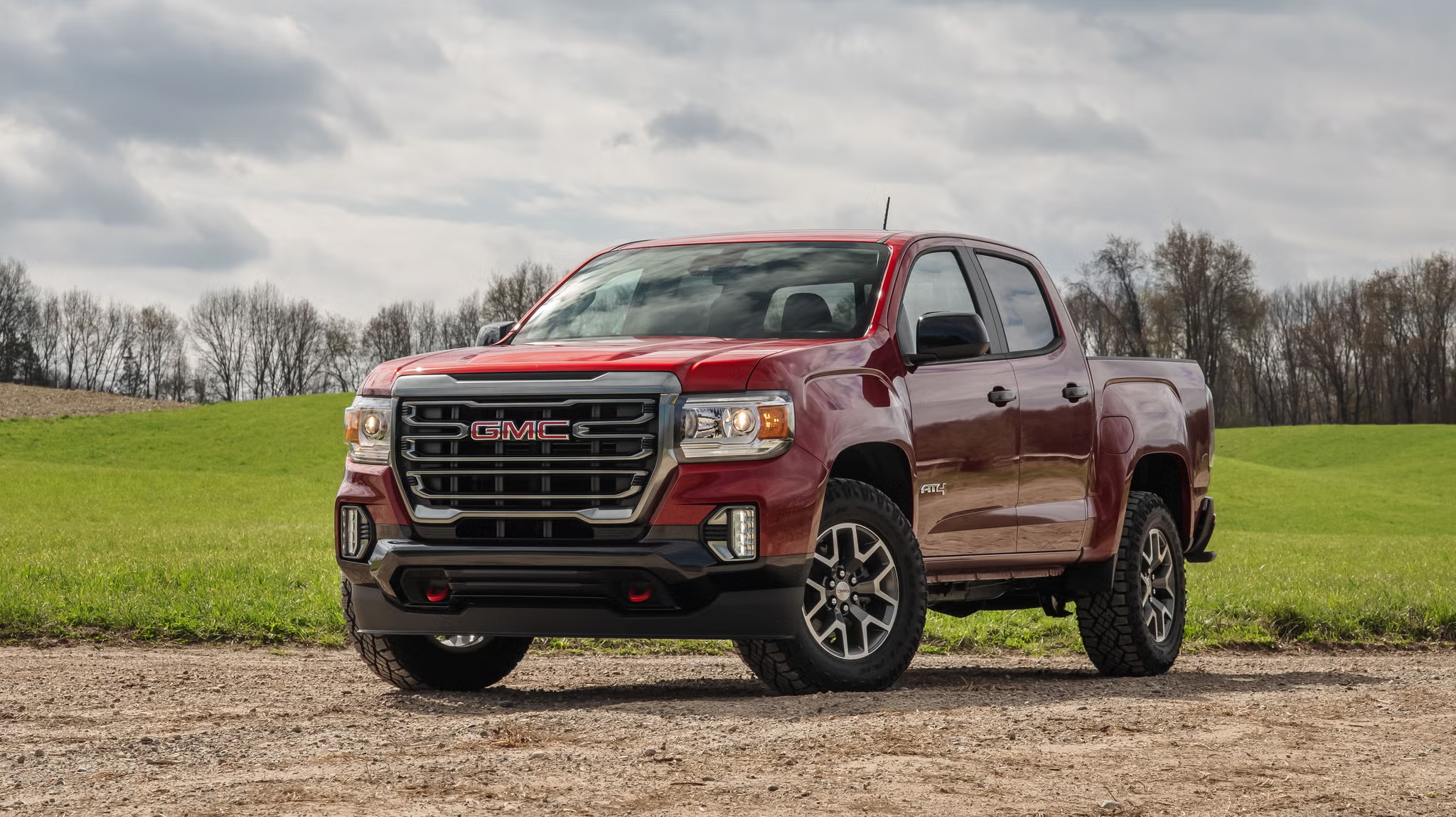
The front struts themselves are problematic, with many units failing prematurely due to internal seal failures. Owners report leaking struts, poor ride quality, and inadequate damping well before expected replacement intervals. Strut replacement costs $400-600 per side and often needs to be performed multiple times during the vehicle’s life.
Rear suspension issues include leaf spring problems and rear shock failures. The leaf springs are manufactured from inferior steel that can crack or break under normal loads. When leaf springs fail, they can cause dangerous handling characteristics and potential tire damage. Replacement costs $600-800 per side, including labor.
The rear shocks frequently fail due to poor sealing and inadequate internal components. Many owners report shock replacement needs before 40,000 miles, which is unacceptably early for any modern vehicle. The shocks are also difficult to access, increasing labor costs for replacement.
The cascade effect of suspension failures in this Canyon generation is particularly problematic. When one component fails, it often leads to accelerated wear of related components due to altered suspension geometry and load distribution. This means owners often face multiple simultaneous repairs that can cost thousands of dollars.
4. GMC Acadia (2007-2016)
The first-generation GMC Acadia established a reputation for suspension problems that took years to overcome. Built on GM’s Lambda platform, this three-row crossover suffered from numerous suspension design flaws and quality issues that resulted in frequent and expensive repairs for owners.
The problems were so widespread that they significantly impacted the model’s reputation and resale value. Front suspension problems are dominated by strut mount failures, which typically occur between 60,000-80,000 miles but can happen much earlier.
The strut mounts are inadequately designed for the vehicle’s weight and suspension loads, leading to premature bearing failure and separation. When strut mounts fail, they create dangerous handling characteristics and can cause complete loss of suspension function. Replacement costs $300-500 per side plus alignment charges.
The front struts themselves are also problematic, with many units experiencing internal failures well before expected replacement intervals. Seal failures cause oil leakage, while internal component failures lead to poor damping and ride quality deterioration. Complete strut replacement typically costs $400-600 per side, and many owners report needing multiple replacements during the vehicle’s life.
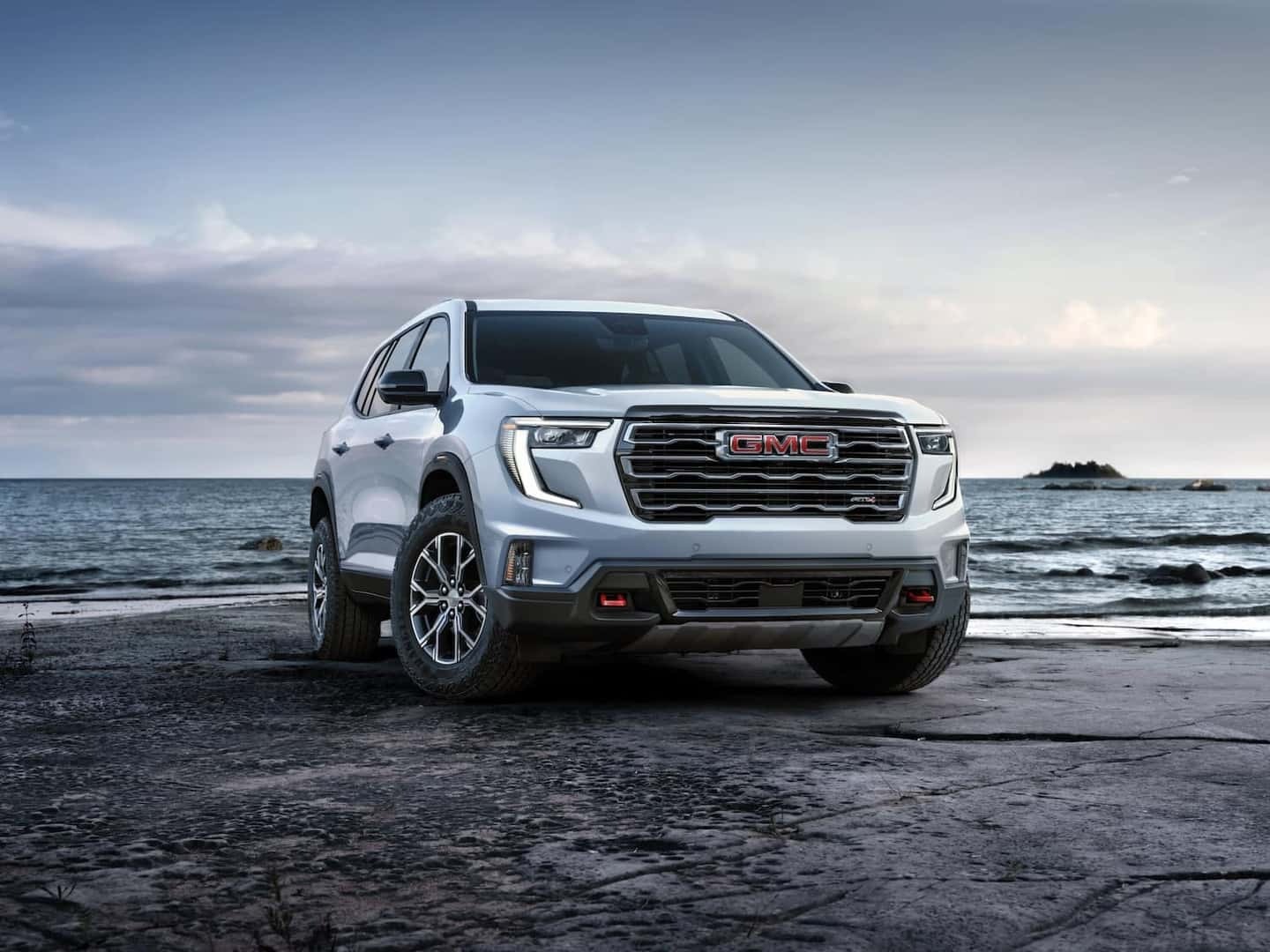
Lower control arms represent another significant problem area. The control arms are manufactured from lightweight materials that sacrifice durability for weight savings. Bushing failures are common, often occurring before 70,000 miles.
When control arm bushings fail, they cause alignment problems, uneven tire wear, and poor handling. Complete control arm replacement is typically necessary, costing $400-600 per side.
Ball joint failures are also common in the first-generation Acadia, often occurring simultaneously with control arm problems. The ball joints are marginally sized for the application and show premature wear under normal use. Replacement costs $200-400 per side, but access difficulties can increase labor charges significantly.
The cumulative effect of these problems creates a maintenance nightmare for first-generation Acadia owners. Many report spending $3,000-5,000 on suspension repairs during the vehicle’s first 100,000 miles, which is unacceptable for any modern vehicle.
The frequency of problems and high repair costs has made this generation of Acadia one of the least desirable used vehicles in terms of suspension reliability.
5. GMC Envoy (2002-2009)
The GMC Envoy, built on GM’s GMT360 platform, represents one of the most suspension-problematic SUVs ever produced by General Motors. This mid-size SUV suffered from a combination of design flaws, manufacturing defects, and inadequate component specifications that resulted in chronic suspension failures throughout its production run.
The problems were so severe that they significantly impacted the model’s reputation and led to numerous technical service bulletins and recalls. The most notorious problem with the Envoy involves the front suspension’s ball joints, which fail at alarmingly high rates.
The lower ball joints, in particular, are grossly under-engineered for the vehicle’s weight and intended use. Failures typically begin around 40,000-60,000 miles, but some owners report failures as early as 30,000 miles. When ball joints fail, they can cause wheel separation and loss of vehicle control, creating an extremely dangerous situation.
The ball joint problem is compounded by GM’s decision to press-fit the joints into the control arms, making replacement expensive and complicated.
Rather than simple ball joint replacement, the entire control arm assembly must be replaced, typically costing $500-700 per side. Many owners find themselves replacing ball joints multiple times during the vehicle’s life, leading to thousands of dollars in repair costs.
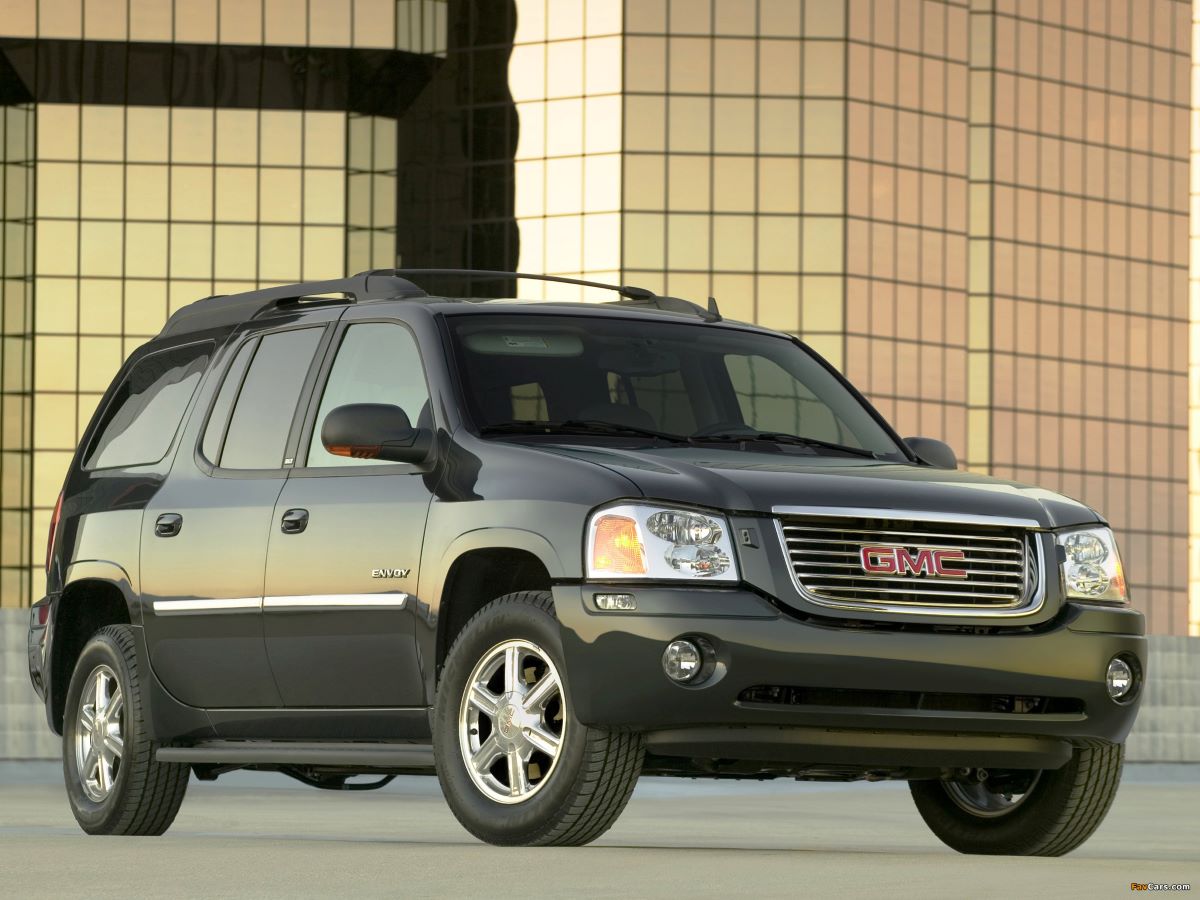
Front strut failures are also common in the Envoy, with many units experiencing premature internal component failures. The struts are inadequately valved for the vehicle’s weight and show poor durability under normal use.
Seal failures cause oil leakage, while internal failures lead to poor ride quality and handling problems. Strut replacement costs $400-600 per side and often needs to be performed multiple times.
The cascading nature of failures in the Envoy’s suspension system creates a particularly frustrating ownership experience. When one component fails, it often accelerates wear on related components due to altered suspension geometry and load distribution. This means owners frequently face multiple simultaneous repairs that can cost thousands of dollars and leave them questioning the vehicle’s fundamental reliability.
Also Read: 5 Budget-Friendly Trucks That Last vs 5 Expensive Trucks That Don’t

